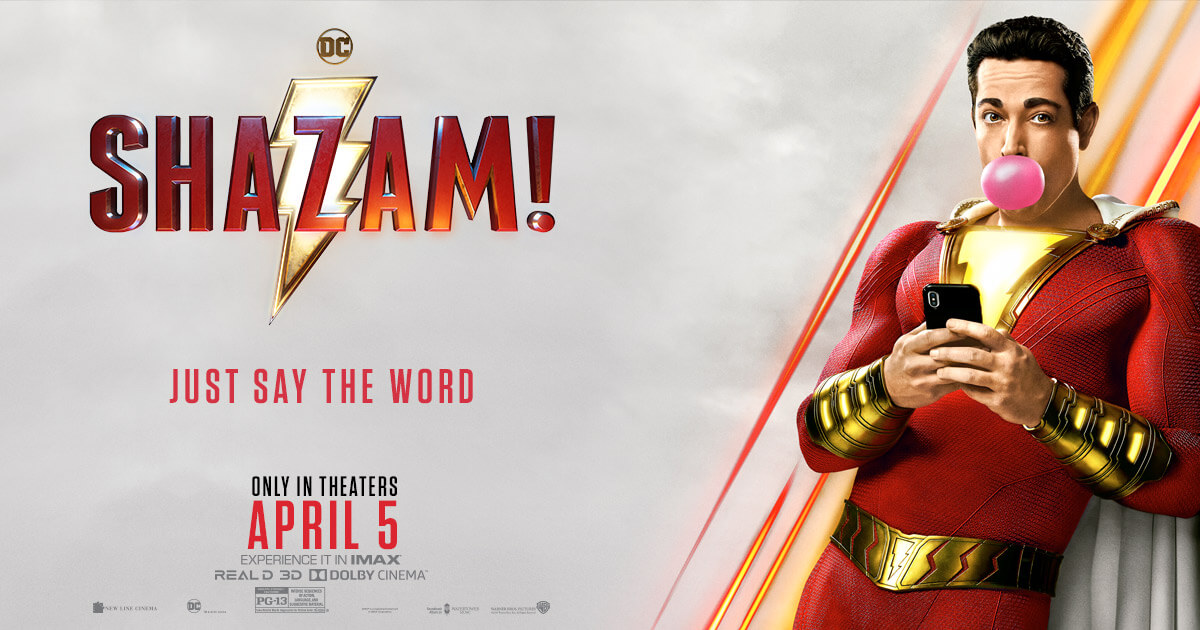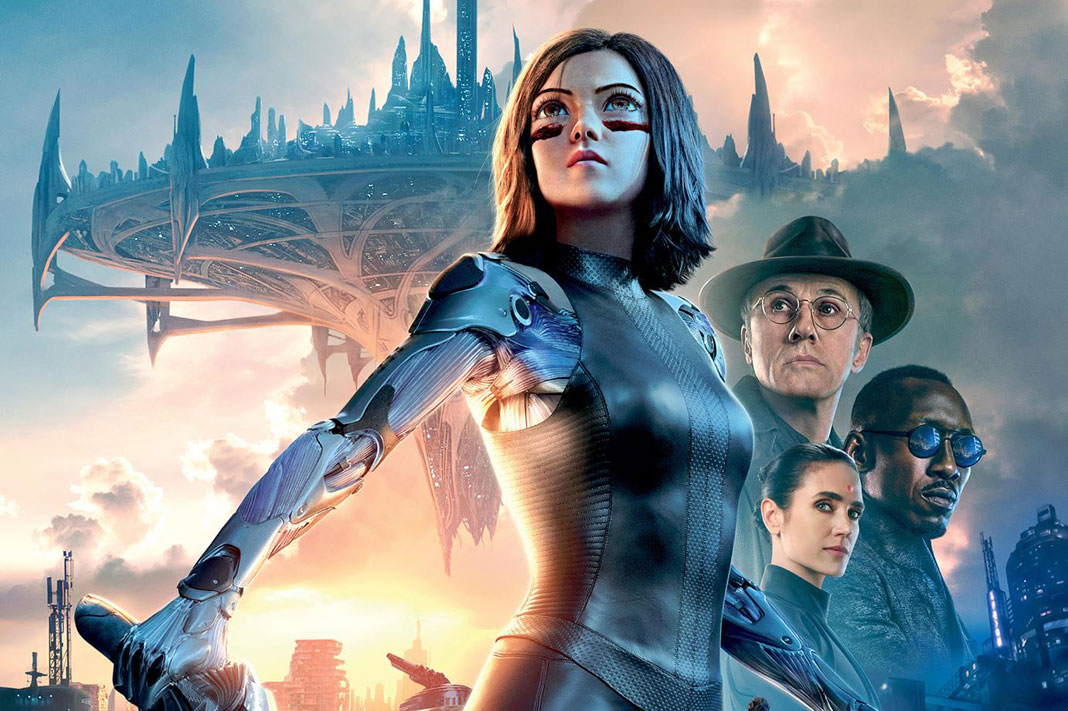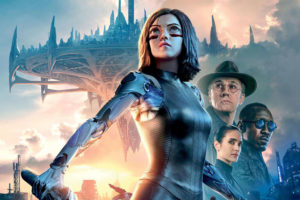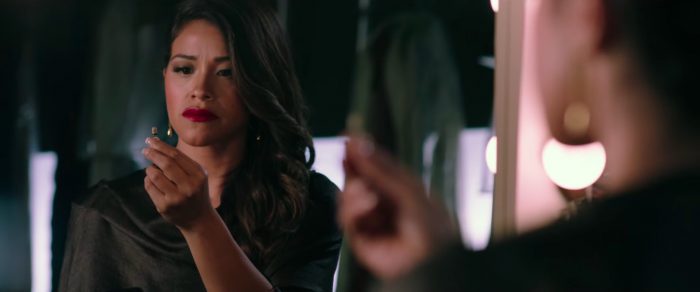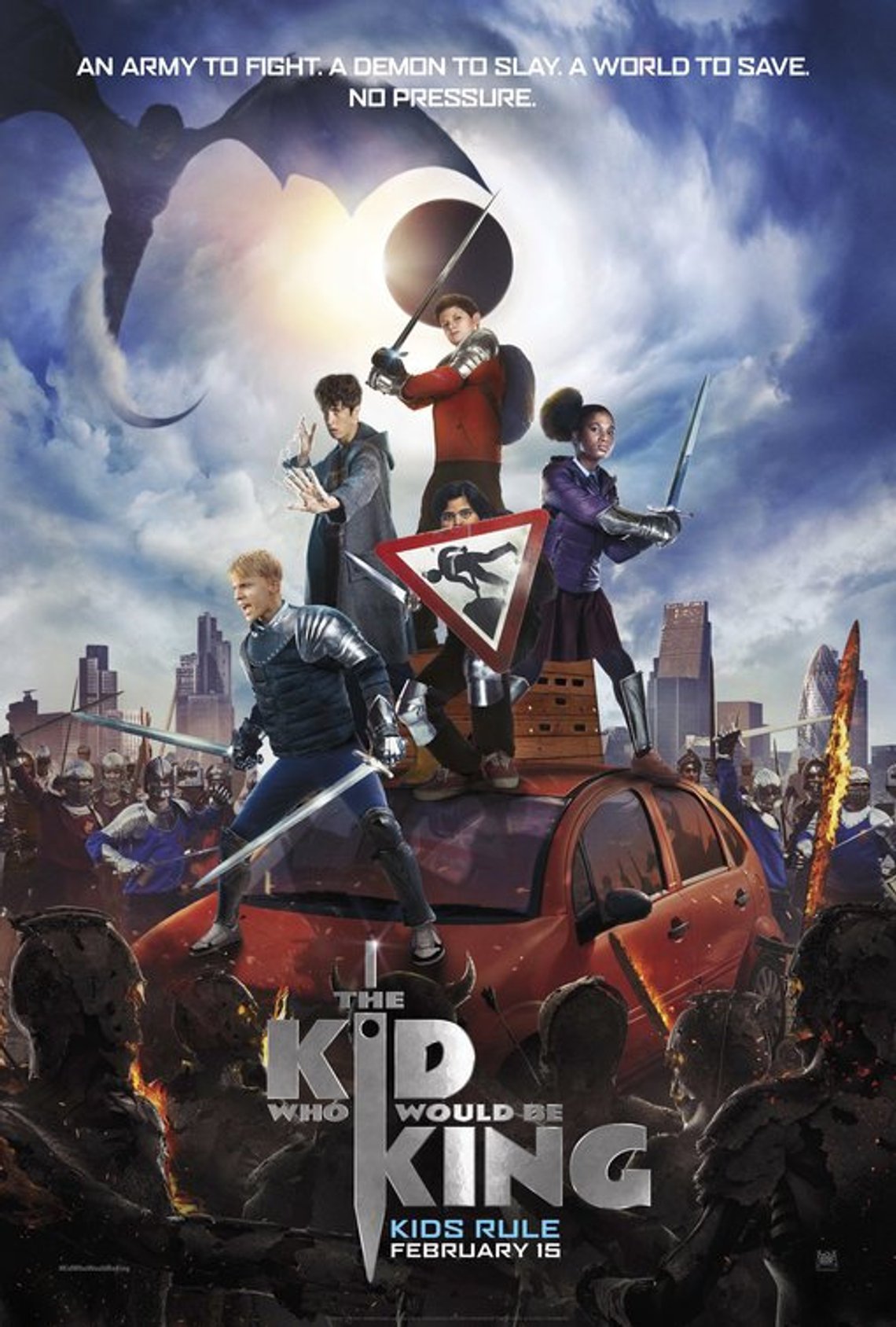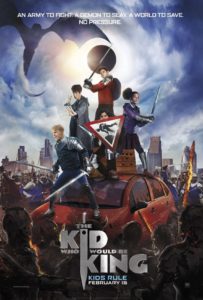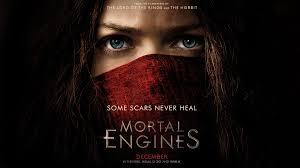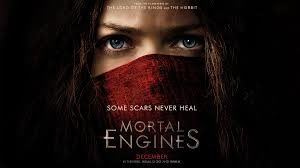SHAZAM!
Posted on April 3, 2019 at 5:19 pm
B +| Lowest Recommended Age: | Middle School |
| MPAA Rating: | Rated PG-13 for intense sequences of action, language, and suggestive material |
| Profanity: | Some schoolyard language and a few bad words |
| Alcohol/ Drugs: | Teens try to buy beer, character with some substance abuse issues |
| Violence/ Scariness: | Extended action/comic book peril and violence |
| Date Released to Theaters: | April 5, 2019 |
| Date Released to DVD: | July 15, 2019 |
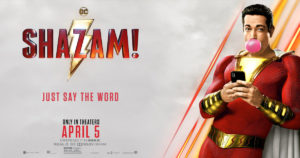
Here’s a word you don’t hear very often in reviews of superhero movies: “Shazam!” is adorable. Oh, yes, it’s exciting and has great fights and special effects and a good bad guy and all that. But it is also wildly entertaining, downright delightful, and, yes, adorable. This is an especially welcome development from DC Comic and Warner Brothers, which have tended toward the it’s-depressing-so-it-must-be-profound side of superhero stories.
“SHAZAM!” is fun. It is exciting. It is warm-hearted. It is very funny. And it is, no kidding, wise, in its own way much more profound than many portentous comic book movies with angsty heroes.
Screenwriter Henry Gayden draws as much from the classic Penny Marshall/Tom Hanks movie “Big” as he does from the varied history of the comic book character whose name is an acronym for the sources of his power:
S The wisdom of Solomon
H The strength of Hercules
A The stamina of Atlas
Z The power of Zeus
A The courage of Achilles
M The speed of Mercury
But Shazam has one more power that is even more intriguing — when teenager Billy Batson (a terrific Asher Angel) says “SHAZAM!” he doesn’t just turn into a superhero — he turns into an adult superhero (Zachary Levi). So Billy/Shazam is excited about being super-strong and having the power to zap things, but he is just as excited about being able to buy beer.
One thing he is not excited about is being sent to another foster home. Billy became separated from his mother at a fair when he was a child and has been bouncing around in the foster system ever since, trying to track down his mother whenever he gets a chance — and making chances when he does not.
The new foster home is headed by a couple who were foster kids themselves and it includes an assortment of children, most of whom try to reassure Billy, but he has no interest. His roommate is Freddy (an equally terrific Jack Dylan Grazer), who walks with a crutch. But Billy does not want to make friends and getting close to anyone seems to him like an admission that his real family, his mother, will never be found. “Families are for people who can’t take care of themselves,” he says. And yet he cannot stop looking for the mother he lost, or who lost him.
And then Billy meets a wizard (Djimon Hounsou). We’ve already seen a flashback where another kid was given the chance to gain the powers of Shazam but failed the test. We won’t find out whether Billy passes the test because the wizard’s time is running out and Billy is his last chance. So, Billy gets the powers, and we get to watch him try to figure out what they are. So does Freddy, who becomes his sidekick, and then his friend, and then, maybe, his family.
While Billy/Shazam is having a blast — literally — with his new powers, the boy who failed the test in 1974 is now an angry man (all-purpose villain Mark Strong as Dr. Thaddeus Sivana) who has spent his life trying to get another chance at the powers that he was once offered.
The film embraces its “Big” themes, with a callout to its most iconic scene, as Billy/Shazam pauses in a chase scene to play with a giant keyboard in a toy store.
Like Hanks, Levi shows us the boy inside the man, the unguarded expressions of someone who has not yet developed a social mask and the awkward moves of someone still trying on the adult body and not too sure of how it takes up space. Angel and Glazer are both outstanding, with tons of cinematic charisma. The story of Billy and Freddy is a perfect balance to the special effects/superhero storyline, and Billy’s growing understanding of what family really means is heartfelt and genuinely sweet.
To say more would be to spoil the movie’s best surprises, and you deserve to see them un-spoiled. Just go to one of this year’s most entertaining films.
NOTE: Stay through the credits for TWO extra scenes!
ALSO NOTE: This is the first of two “Big”-inspired films this month. Coming up, we have the “Big” triple reversal “Little,” starring Black-ish’s Marsai Martin, who came up with the idea when she was watching the Hanks film. Instead of a white boy wishing to be big, this ons is about a black woman who is wished into becoming a child again. The film co-stars Regina Hall and “Insecure’s” Issa Rae.
Parents should know that this film includes extended sci-fi/superhero peril and violence, some schoolyard and brief strong language, a teen sneaking into a strip club, and some potty humor. There are issues of parental abandonment.
Family discussion: What did Billy learn from seeing his mother? If you had Shazam’s powers, what would you do first? Was the wizard’s test a good one? How was Thaddeaus affected by his father?
If you like this, try: “Thor: Ragnarock” and “Wonder Woman”

